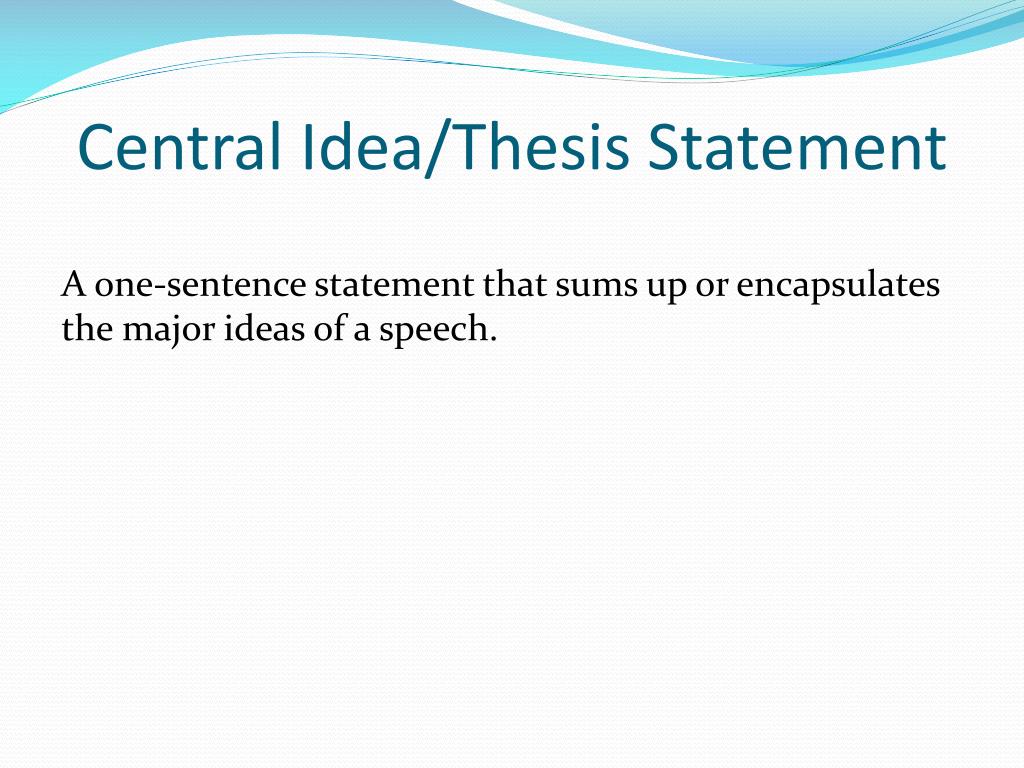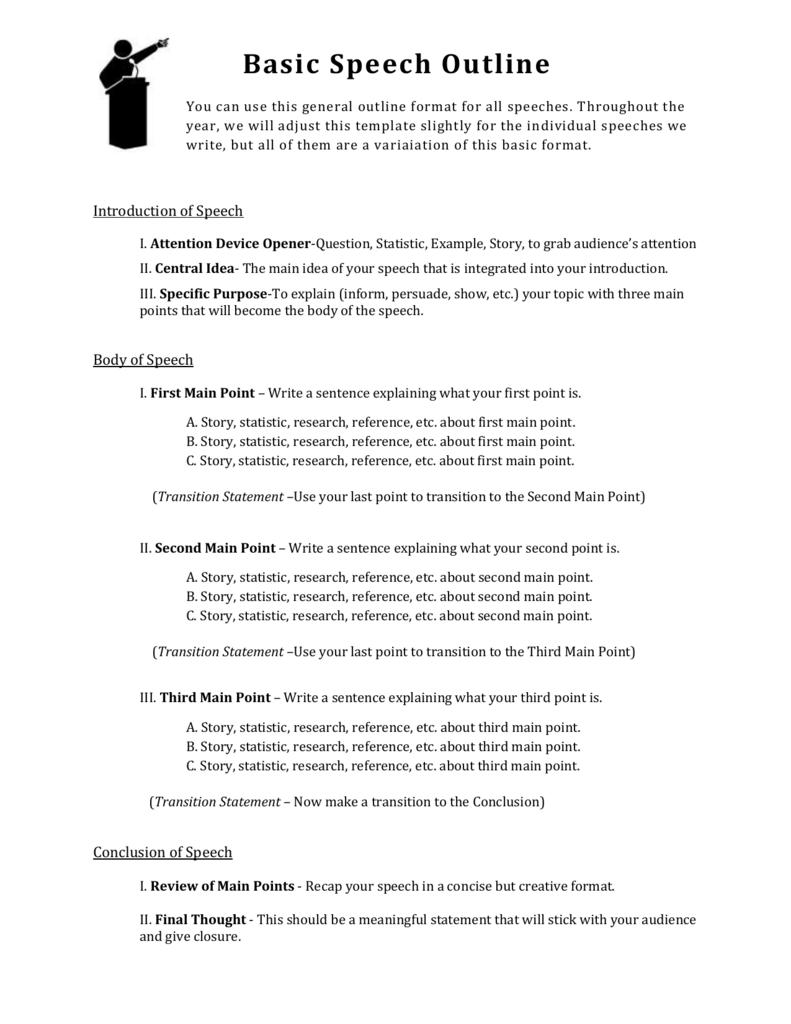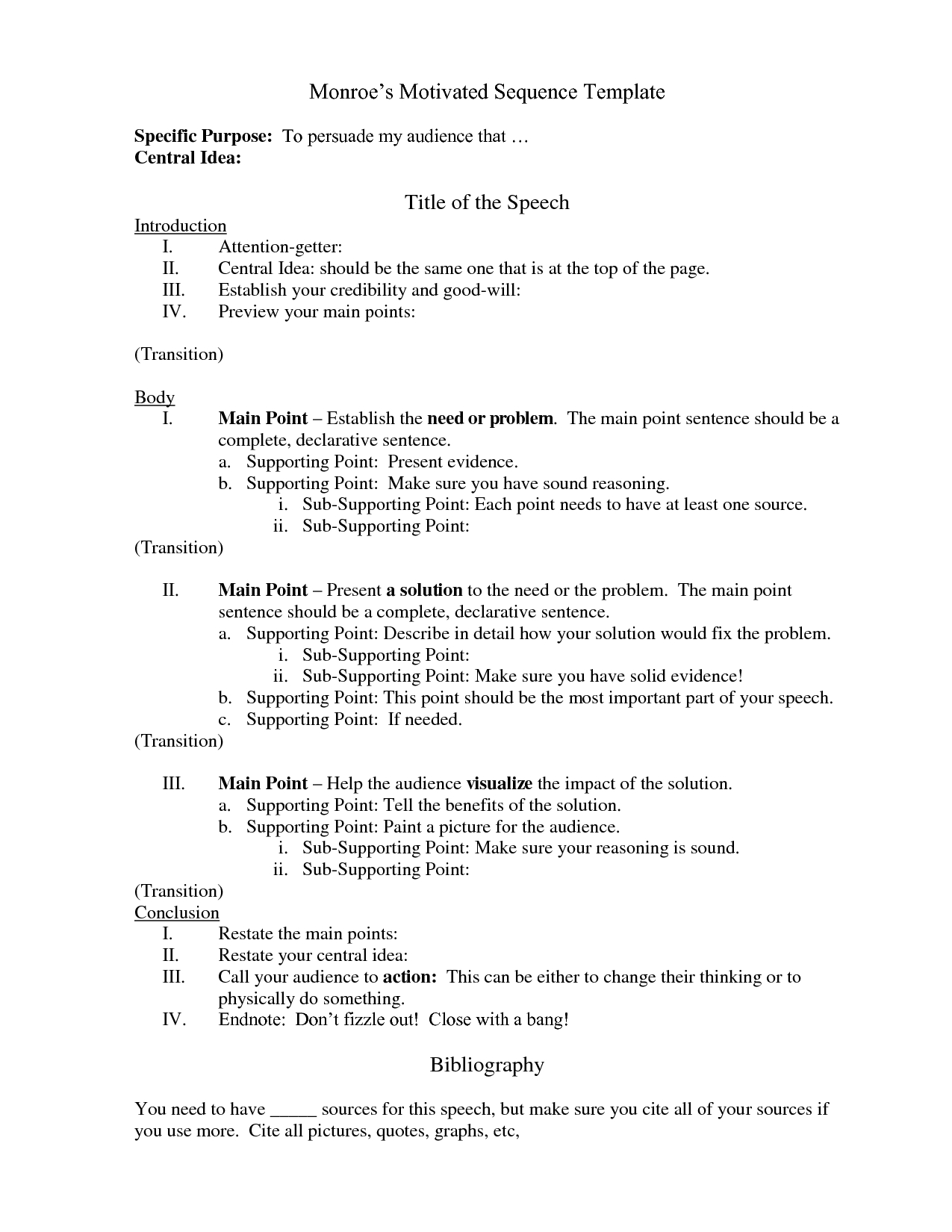

#PERSUASIVE SPEECH CENTRAL IDEA EXAMPLES HOW TO#
They also evangelize ideas, and they know how to get people to change their beliefs and behavior. Influencers are the people who mobilize others.

They can change the minds of individuals and groups – large or small. These can help to appeal to the fact that they have something to give in order to make a change happen.

You may want to use words like acquire, fund, support, or provide. Instead, you’ll want to ask them to share their resources. To appeal to suppliers, you need to use different words than you did with the doers, since they’re not the ones that are going to be hitting the ground running to complete tasks. Suppliers in your audience may be execs who could give you staff–or, investors who are trying to decide whether they want to put their money into a venture – or not. They can get you what you resources you don’t have yourself. Because of the amount of resources they have, suppliers have the means to help people move forward. However, they have a lot of resources at their disposal – like money, manpower, materials, etc. Suppliers are usually not as action-oriented as doers. You may want to ask them to assemble, gather, attempt, or respond. If you’re speaking to doers, you’ll want to craft your CTA so that it includes action words that clearly explain what the doers should do. Doers make an organization run, day in and day out.

Doers don’t shy away from physical tasks, and have the ability to round up the troops to inspire action in others, as well. They are the ones that hear what needs to get done – and then do it. Getting “Doers“ to Do Somethingĭoers are the worker bees of an organization. Audiences have a mix of all these skills, and you should appeal to each of them in your presentations. Taking action will seem natural for them when they can respond with an action that resonates with them. To get your audience to act, your CTAs have to strike a chord and make sense with the skills they bring to the table. There are four distinct skills your audience brings to help with your CTA: Doers, Suppliers, Influencers, and Innovators. Who’s in Your Audience, and What Makes them Tick? So, it’s important to get to know who is in your audience before you decide how you’re going to deliver their post-talk “to-dos.” Once you do, you can ensure your call actually gets a response. People respond to different types of calls to action based on their temperaments, daily activities, goals, and more. The way to ensure that you write a call to action that persuades is to keep in mind that one size does NOT fit all-and you’ve got to tailor your CTAs. And, it’s a key part of what makes your speech persuasive.Īn audience might be thoroughly gripped by your narrative and convinced to believe what you do–but if they leave not knowing what they are supposed to do with your ideas, your presentation will have been–essentially–fruitless.īecause CTAs are such an important part of a presentation, it’s essential to make sure that the one you deliver lands with the people hearing it. The CTA gives audience members concrete tasks to tackle, and these tasks are ones that must be completed in order to bring your ideas to fruition. The call to action which comes right before the end of a persuasive speech is where you clearly tell the audience a role they can play after they leave your talk. Yet, there’s a key part of a presentation that doesn’t get mentioned enough-the call to action or CTA-and, a clear CTA creates a critical turning point in your presentation (or any other form of persuasive communications too). A well constructed and delivered presentation changes minds and ignites action.


 0 kommentar(er)
0 kommentar(er)
